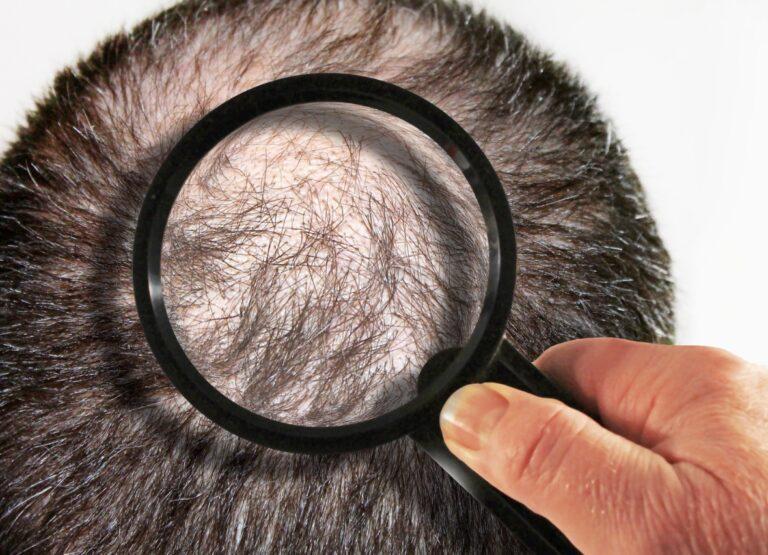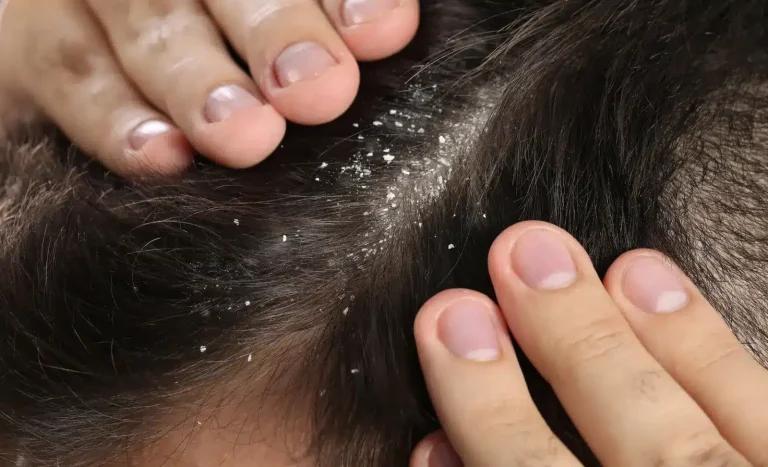Before we get into the pipeline of new drugs that can treat hair loss, it’s a good idea to refresh yourself with what the five type of hair loss are:
- Androgenetic Alopecia (female and male pattern baldness). This is by far the largest type of hair loss and is responsible for 90% of all cases of hair loss.
- Chemotherapy. As the name suggests, this is hair loss induced by cancer treatment
- Telogen effluvium. This is stress-induced hair loss
- Alopecia Areata. This is auto-immune induced hair loss
- Scarring Alopecia. This is hair loss from scalp injury
The need for newer and better hair loss treatments
Hair loss, especially androgenetic alopecia, affects millions of men and women worldwide. While traditional therapies like minoxidil and finasteride (Propecia) have been available for decades, these treatments are generally viewed as being limited and fall short of patient expectations for full, permanent hair restoration. Additionally, they generally require lifelong commitment and come with potential side effects. The good news is that there are a number of pharmaceutical companies pushing through with novel hair loss treatments.

New Hair Loss Treatments by Clinical Trials Stages and Target Hair Loss Condition
Is PP405 the Answer to Hair Loss?
A promising new topical small-molecule compound, PP405, has emerged as a frontrunner in the race for a newer and better treatment for hair loss. It can spark new hair growth by directly stimulating human hair follicle stem cells.
Developed by Pelage Pharmaceuticals, a medical development company spun out of research at UCLA, PP405 is now in Phase 2a human trials for the treatment of androgenetic alopecia.
Early data suggests it may offer a breakthrough for not only for male pattern baldness but also for patients affected by medical conditions such as chemotherapy-induced hair loss.
What is PP405?
PP405 is a topical small molecule that bypasses hormonal pathways and targets metabolic signaling inside the follicle. Specifically, it inhibits the mitochondrial pyruvate carrier (MPC), which is a protein that controls how pyruvate enters the mitochondria for energy generation.
By disrupting this pathway, PP405 shifts cells toward glycolysis, a state that promotes hair regeneration.
The compound was developed by UCLA scientists, including Dr. Heather Christofk, a professor of biological chemistry, and Dr. William Lowry, a stem cell biologist. Their work featured in UCLA Magazine and, based on earlier findings at Harvard Medical School, has been pivotal in uncovering how metabolism controls stem cell activation.
Check out their phase 1 clinical study.
How Does PP405 Work?
Think back to the burn in your legs during a hard workout; that’s your muscles switching from oxygen-powered (aerobic) metabolism to glycolysis, a faster, oxygen-independent way of producing energy.
Interestingly, regenerating hair follicle stem cells prefer this same shortcut.
Instead of relying on the mitochondria, they thrive in a glycolytic state, just like your muscles during sprints. It’s not about energy efficiency, it’s about speed and readiness to grow.
PP405 mimics this state.
By blocking the mitochondrial pyruvate carrier (MPC), PP405 nudges dormant hair follicle stem cells away from mitochondrial metabolism and into glycolysis, triggering them to exit dormancy and start regenerating.

PP405 reawakens dormant hair follicles by forcing cells into glycolysis.
How Does PP405 Affect the Hair Growth Cycle?
PP405 interacts with the hair cycle by targeting the transition from the telogen (resting) phase to the anagen (growth) phase, thereby reactivating dormant follicles in patients experiencing pattern hair loss. In inhibiting the mitochondrial pyruvate carrier (MPC), energy production within hair follicle stem cells shifts toward glycolysi,s which is a metabolic state associated with tissue regeneration. This reprogramming promotes hair follicle regeneration and initiates a return to active growth, accelerating the anagen phase and stimulating visible hair regrowth.
July 2025 PP405 Study Update
In the July 2025 trial update, the randomized portion of the PP405 Phase 2a clinical trial progressed with updated eligibility and inclusion criteria, refining participant selection for improved consistency.
The study’s sponsor, Pelage Pharmaceuticals, reported that the trial met its primary safety endpoint, with no significant adverse events reported.
The investigational treatment, which presents as a 0.05% topical ge,l demonstrated promising results in men with more advanced androgenetic alopecia. 31% of those trial participants achieved over 20% improvement in their hair density at 8 weeks, compared to 0% in the placebo group.
Dr. Arash Mostaghimi, Vice Chair of Clinical Trials and Innovation at Brigham and Women’s Hospital, emphasized the scientific rigor of the study design and noted that PP405 demonstrated measurable biological activity early in treatment. In August 2024, Dr. Mostaghimi was also appointed to the Clinical Advisory Board of Pelage Pharmaceuticals, strengthening his advisory role in the advancement of this regenerative hair loss therapy.
The study includes both male and female participants, helping to ensure broader applicability across biological sexes. Ongoing quality control (QC) review is in progress, with the clinical record last updated in July 2025 on ClinicalTrials.gov.
The study is estimated to complete in December 2025.
Understanding the Science Behind PP405
Hair follicles cycle through growth, rest, and shedding phases. When human hair follicle stem cells become quiescent, often due to aging, metabolic imbalance, or damage, then hair stops regenerating.
A 2017 hair loss study in Nature Cell Biology found that increasing lactate dehydrogenase measurable biological activity, could reactivate stem cells, promoting regrowth (Flores et al., 2017). PP405’s mechanism of action mimics this by shifting energy usage in stem cells.
Understanding FDA Clinical Trial Phases
For a new pharmaceutical like PP405 to reach the public in the United States, it must undergo a multi-phase review process overseen by the U.S. Food and Drug Administration (FDA). Each phase is designed to assess the drug’s safety, the effect of intervention, dosage, and side effect profile in progressively larger and more diverse patient populations.
- Phase 1: The initial phase evaluates basic safety, tolerability, and pharmacokinetics in a small group of healthy volunteers or patients.
- Phase 2a: Focuses on finding the ideal dosage range and early evidence of effectiveness in a target population.
- Phase 2b: Further investigates efficacy and safety in a larger cohort.
- Phase 3: Large-scale, multicenter trials to compare the drug against placebo or a different drug that is used as current standard of care before potential approval.
PP405 is currently in Phase 2a, which focuses on collecting data on dosage and early signs of efficacy. Its future progression and licensing potential depends on whether favorable data analysis persists on in rigorous future studies.

PP405 and its regulatory journey (FDA)
What are the chances that PP405 for Hair Loss Drugs will fail?
Regulatory approval is a long and demanding journey. While PP405 shows promise, many hair loss drugs have stalled or been abandoned in their clinical development cycle. Below is a table showing the status of the current raft of hair loss treatments

PP405 will need to prove itself in long-term, multicenter trials before there can be clarity on the likelihood of it being licensed by the FDA or other regions like UK’s MHRA or EU’s EMA.
Medical Disclaimer
NowPatient has taken all reasonable steps to ensure that all material is factually accurate, complete, and current. However, the knowledge and experience of a qualified healthcare professional should always be sought after instead of using the information on this page. Before taking any drug, you should always speak to your doctor or another qualified healthcare provider.
The information provided here about medications is subject to change and is not meant to include all uses, precautions, warnings, directions, drug interactions, allergic reactions, or negative effects. The absence of warnings or other information for a particular medication does not imply that the medication or medication combination is appropriate for all patients or for all possible purposes.












